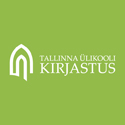Eestlased Venemaal: reisikirjanduslikke reportaaže [Estonians in Russia]
Abstract
The article surveys the depiction of Russia and Russians in the Estonian travelogues published during the Estonian Republic, for example how historical-political context influenced the depiction of Russia and Russians. One aim of the article is to look for possible common features and structures, as well as the stereotypical images, that are repeated from travelogue to travelogue. The methodological basis for the analysis is imagology (or image studies), which deals with research on national images and their manifestation in literature. Most of the travelogues were published in newspapers and can be characterised as reportages, not as literary travelogues. There are very few travelogues writt en in the Tuglas-like tradition of the travelogue (where the history and art books one has read, as well as the literature and personal impressions, are intertwined. This kind of travelogue is both educative and entertaining). The travelogues from the beginning of the 1920s depict cities (mainly Leningrad and Moscow) where poverty and speculation dominate, while the travelogues in the 1930s concentrate more on culture and construction. The author’s way of travelling (independently or as a tourist) and his/her beliefs influenced the depiction of Russia and Russians. Authors who were positively disposed towards communism saw Russia in a more positive light, while others tended to concentrate more on problems.
Keywords
travelogues, images of Russia and Russians, 1920s, 1930s
Full Text:
PDFDOI: https://doi.org/10.22601/2013.15.%25x
Refbacks
- There are currently no refbacks.
Published by / Kirjastaja:

ISSN 2504-6616 (print/trükis)
ISSN 2504-6624 (online/võrguväljaanne)
